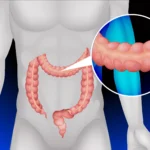The common cold is a viral infection that can affect anyone at any time, typically during colder months. Although it is generally a mild illness, it can cause discomfort and disruption to daily activities. Understanding cold symptoms, their causes, and how to manage them effectively is essential for quick recovery. This comprehensive guide covers everything you need to know about cold symptoms, offering you the most accurate and up-to-date information.

Recognizing Cold Symptoms
Cold symptoms vary from person to person, but some key signs are widely recognized. Early detection allows for timely management, minimizing the impact of the illness. Here’s a closer look at the most common cold symptoms:
1. Runny or Stuffy Nose
A runny or blocked nose is often one of the first indicators of a cold. The nasal passages become inflamed as the body attempts to expel the virus. This leads to excessive mucus production, making breathing through the nose difficult.
2. Sneezing
Frequent sneezing is a classic symptom of a cold. The body’s response to viral irritation in the nasal passages often results in involuntary sneezing.
3. Sore Throat
Many people experience a sore throat at the onset of a cold. The inflammation in the throat makes swallowing uncomfortable. The sensation can range from mild irritation to a painful scratchiness.
4. Coughing
A cough typically develops as the cold progresses. Initially, it may be dry, but it often becomes more productive, producing mucus as the infection advances.
5. Fatigue
Cold viruses cause the body to expend energy fighting off the infection, leading to feelings of fatigue. This can result in reduced stamina and a general sense of being unwell.
6. Headache
While not as severe as the headaches often associated with the flu, mild headaches are common with colds due to congestion and sinus pressure.
7. Mild Fever
A low-grade fever may occur in some individuals, typically around 100°F (37.8°C). This is the body’s natural response to the viral infection.
8. Muscle Aches
Though less intense than the body aches associated with the flu, mild muscle soreness can occur as part of the cold symptoms.
Causes of Cold Symptoms
Cold symptoms are caused by viral infections, most commonly by rhinoviruses. These viruses spread through the air when an infected person coughs, sneezes, or talks, releasing droplets that others inhale. Direct contact with contaminated surfaces is another common way the virus spreads.
Rhinoviruses
Rhinoviruses are the leading cause of the common cold. They primarily affect the upper respiratory system, causing inflammation in the nasal passages and throat.
Other Viral Infections
While rhinoviruses are the primary culprits, other viruses like coronaviruses, respiratory syncytial virus (RSV), and enteroviruses can also cause cold-like symptoms.
Cold vs. Flu: Understanding the Difference
While cold and flu share some overlapping symptoms, they are distinct conditions. Knowing the differences helps in identifying the illness early, which can influence treatment and recovery strategies.
Cold Symptoms:
- Gradual onset of symptoms
- Primarily affects the nose and throat
- Mild fever (if present)
- Cough (usually mild)
- Sore throat
- Runny or stuffy nose
Flu Symptoms:
- Sudden onset of symptoms
- Affects the entire body
- High fever (typically above 101°F or 38.3°C)
- Severe body aches and fatigue
- Dry cough and sore throat
- Congestion and runny nose
Flu symptoms tend to be more severe, affecting multiple body systems and lasting longer than cold symptoms.
How Long Do Cold Symptoms Last?
The duration of cold symptoms can vary, but generally, cold symptoms peak within 2 to 3 days after infection. Mild colds may resolve within a week, while more persistent colds could last up to 10 days. Some residual symptoms like a cough or nasal congestion can linger for several weeks.
Prevention and Management of Cold Symptoms
While there is no cure for the common cold, there are several ways to prevent the spread of the virus and manage the symptoms effectively. Here are some strategies to minimize discomfort and reduce the duration of your illness:
1. Wash Your Hands Frequently
Washing hands with soap and water regularly is one of the most effective ways to prevent the spread of cold viruses. Avoid touching your face, especially your eyes, nose, and mouth.
2. Stay Hydrated
Drinking plenty of fluids helps thin mucus, making it easier to expel. Water, herbal teas, and broths are excellent choices.
3. Rest and Sleep
Adequate rest allows your body to focus on fighting the infection. Sleep boosts your immune system and speeds up recovery.
4. Use Over-the-Counter Remedies
Over-the-counter (OTC) medications like decongestants, antihistamines, and pain relievers can provide temporary relief for cold symptoms. Be cautious and consult with a healthcare provider if you have underlying health conditions.
5. Stay Warm
Maintaining a warm environment can help soothe sore throats and alleviate muscle aches. Use blankets and drink warm beverages to help your body recover.
6. Humidify Your Space
A humidifier adds moisture to the air, helping to ease nasal congestion and soothe a dry throat.
7. Saltwater Gargle
A saltwater gargle can provide relief for a sore throat and reduce inflammation.
8. Vitamin C and Zinc
While research on their effectiveness is mixed, some people find that taking vitamin C or zinc supplements can shorten the duration of a cold or reduce the severity of symptoms.
When to See a Doctor
In most cases, the common cold is a self-limiting illness that resolves on its own. However, there are times when it’s important to seek medical advice:
- If symptoms last longer than 10 days
- If you experience high fever (above 101°F or 38.3°C)
- If you have difficulty breathing or chest pain
- If you have underlying health conditions, such as asthma or heart disease
Complications of the Common Cold
Although rare, complications can arise from the common cold, particularly in individuals with weakened immune systems. These complications include:
- Sinus Infections (Sinusitis)
- Ear Infections (Otitis Media)
- Bronchitis
- Pneumonia

